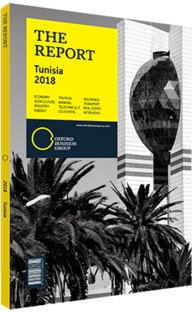Exports and internationalisation presenting opportunities for Tunisia's pharmaceutical manufacturers
The combination of a domestic market categorised by high expenditure on health care and regional export possibilities has made Tunisia’s pharmaceuticals industry one of the country’s most successful segments. According to a report from the World Bank, the country’s pharmaceuticals market grew at an annual average of 15% between 1990 and 2013. This growth was largely driven by privatisation and the arrival of foreign investment. While this has indeed placed the industry in a strong position, investments in biotechnology and enhancements to regulations could further improve the segment’s contribution to the economy.
Strengthening the domestic pharmaceuticals industry has become essential, as local producers have encountered hurdles to growing export volumes. Still, a majority of producers have established operations in partnership with multinational pharmaceuticals companies, bringing much technical know-how to domestic operations. Firms like Pierre-Fabre, Pfizer, Recordati, Hikma and Sanofi have gained a foothold in the Tunisian market as part of their broader North African operations.
Growth Driven
The industry has posted visible growth on many fronts. The number of pharmaceuticals manufacturing units rose from 25 to 63 between 2011 and 2017, 31 of which produce pharmaceutical drugs for humans. The total segment had a value of $891m as of the end of 2016. Employment in pharmaceuticals manufacturing has also risen steadily, reaching over 10,000 by early 2018, according to the Agency for the Promotion of Industry and Innovation. A report by BMI stated that the value of the Tunisian pharmaceuticals market is set to grow at an annual average of 3.7% in US dollar terms, to reach as high as $1.35bn by 2026.
In addition to its economic impact, a key outcome of the expansion of the industry has been the rise in domestic consumption. Locally produced medications accounted for approximately 50% of the country’s needs in 2017, which was up from 14% in 1990, according to local media reports. To supplement the need for medicines, Tunisia imports pharmaceuticals through the Central Pharmacy of Tunisia, which has the sole responsibility for all external acquisition of pharmaceutical products for consumption by the domestic market.
Increasing Value
The market has benefitted from state programmes such as tax incentives to encourage the production of generic medications. This has had both positive and negative effects: while improving the production of cheaper medicine has allowed the country to lower its health care costs for the general population, it has also put a number of pharmaceuticals manufacturers in a tough spot in terms of international competitiveness. With the majority of the country’s production focused on generic medicines, Tunisian manufacturers have not been dynamic enough in their attempt to increase their international sales.
Nevertheless, francophone Africa is increasingly seen by Tunisian pharmaceuticals firms as an interesting region of focus, helping to compensate for lower growth rates at home. Tunisia exports an annual TD100m (€38.4m) worth of pharmaceuticals to roughly 20 markets, mostly in sub-Saharan Africa, according to the Ministry of Health. However, some factors need to be addressed for the industry to capture a larger share of overseas markets. The World Bank found that for local producers to improve their export numbers, they would have to increase the volume of biotechnology-based pharmaceutical products, with a stronger emphasis on research and development. Pharmaceuticals manufacturing could also profit from closer collaboration with the medical tourism market, which treated 5000 foreign patients in 2016 for a turnover of TD500m (€192m). This could help promote Tunisian medicines abroad.
You have reached the limit of premium articles you can view for free.
Choose from the options below to purchase print or digital editions of our Reports. You can also purchase a website subscription giving you unlimited access to all of our Reports online for 12 months.
If you have already purchased this Report or have a website subscription, please login to continue.

